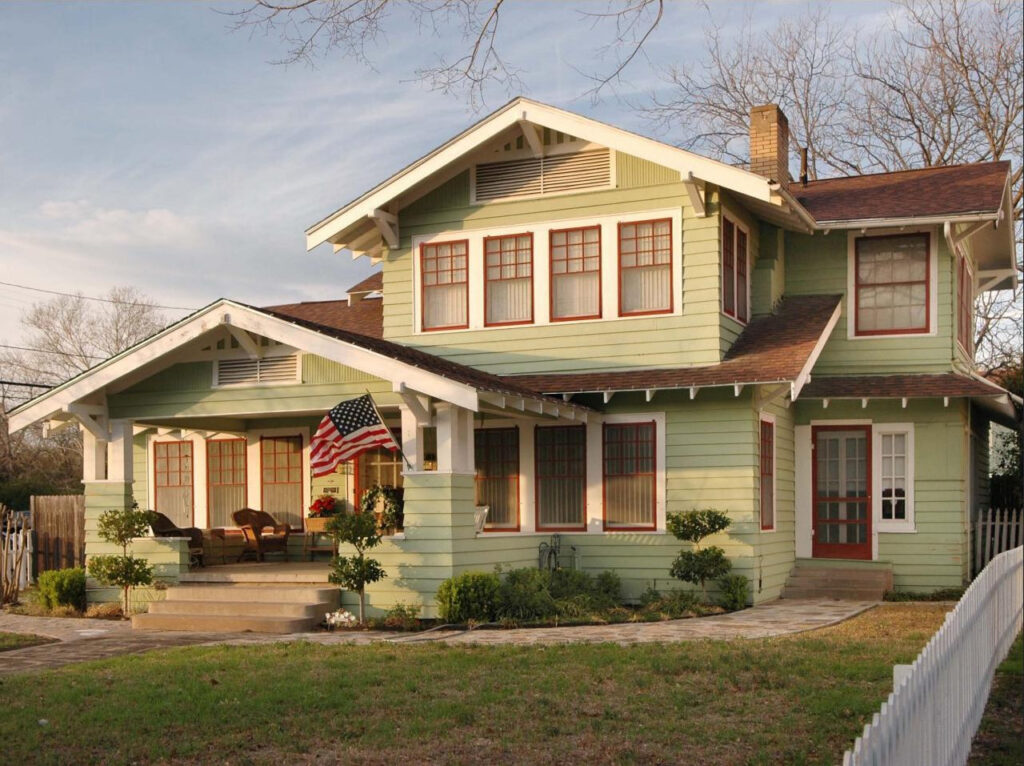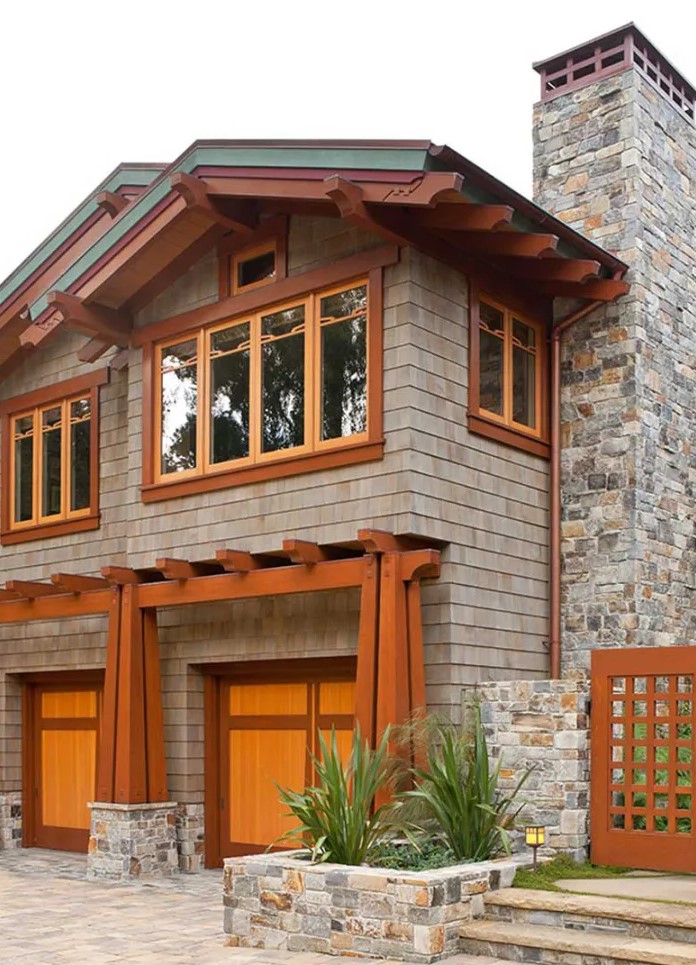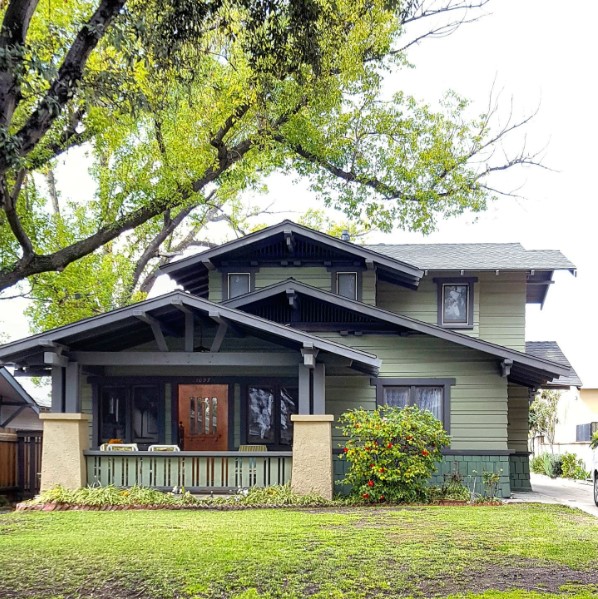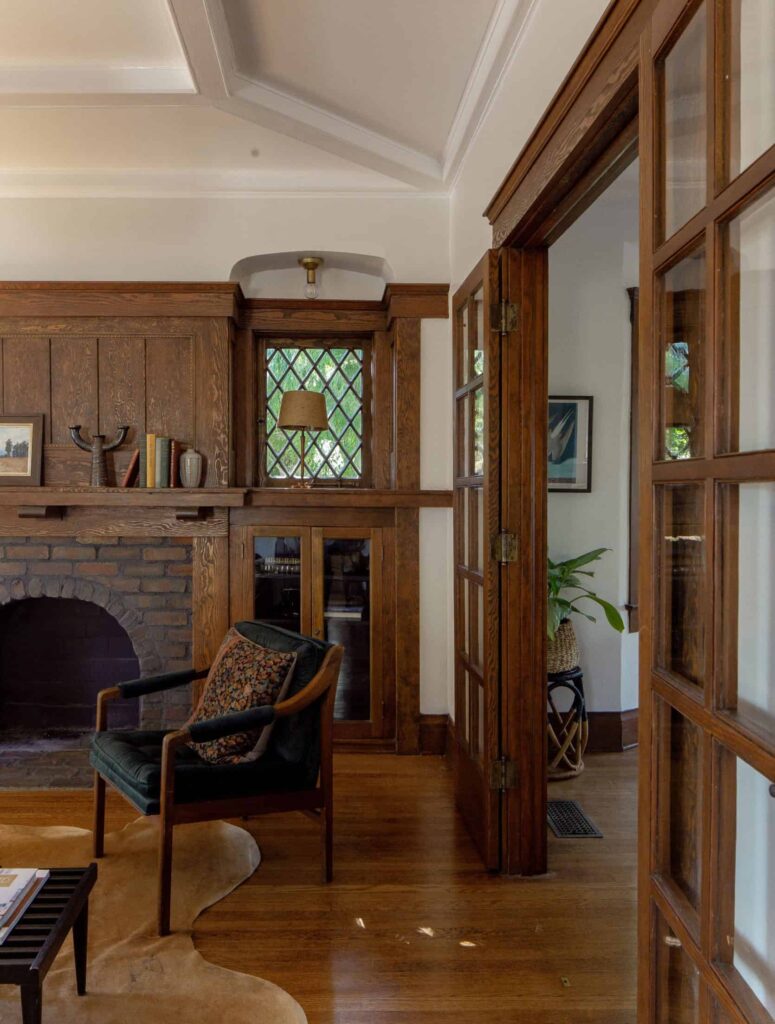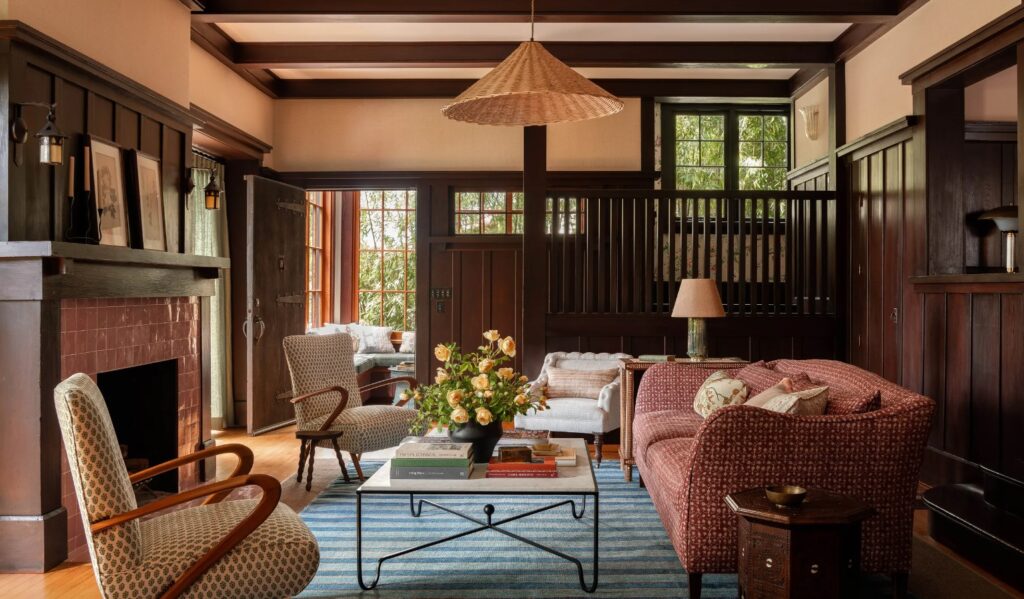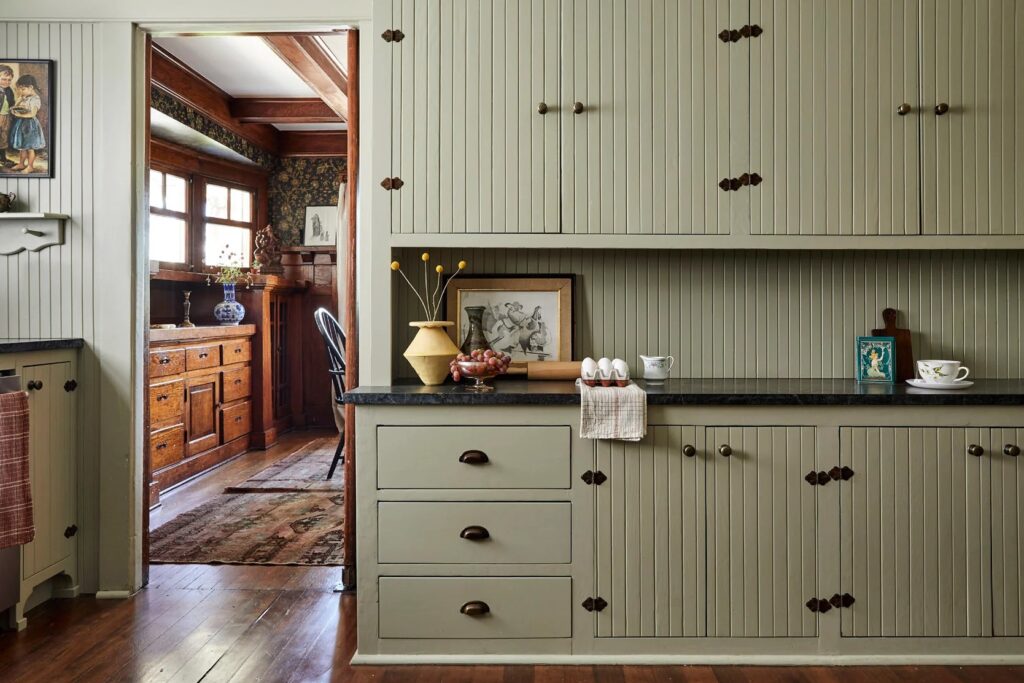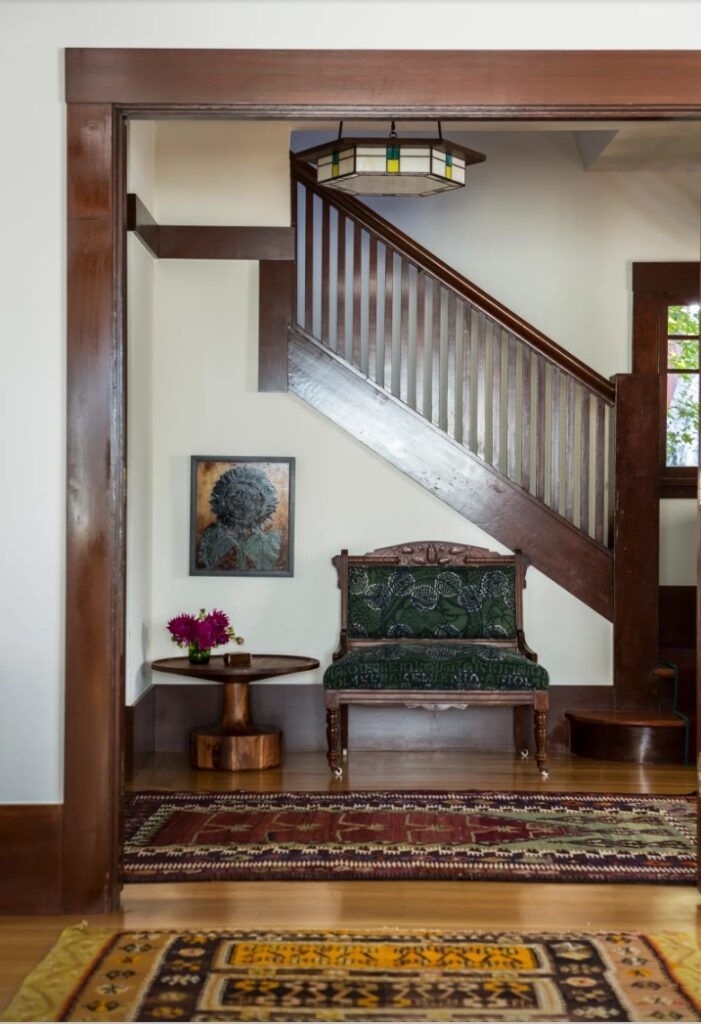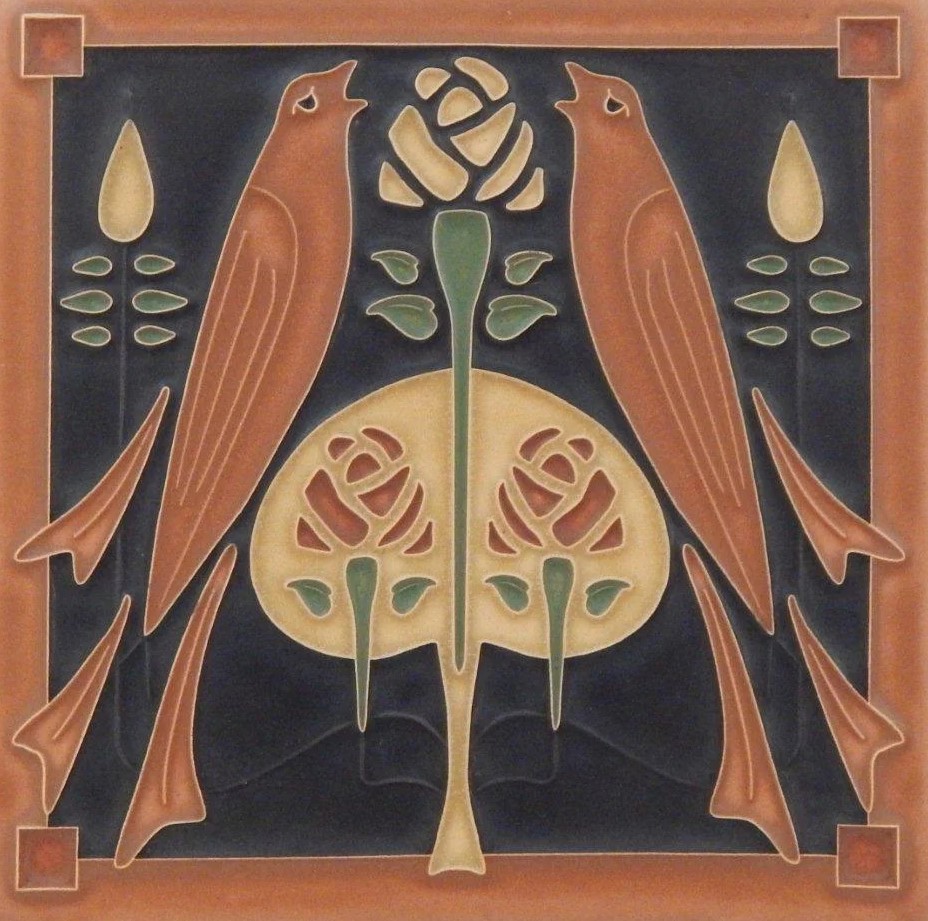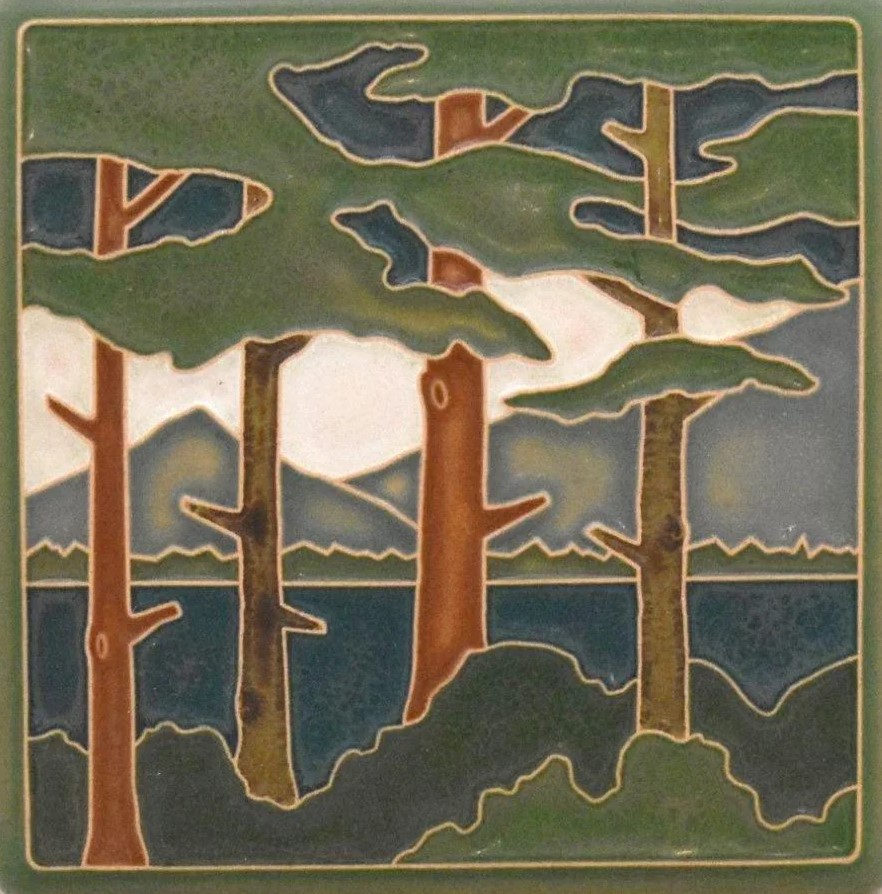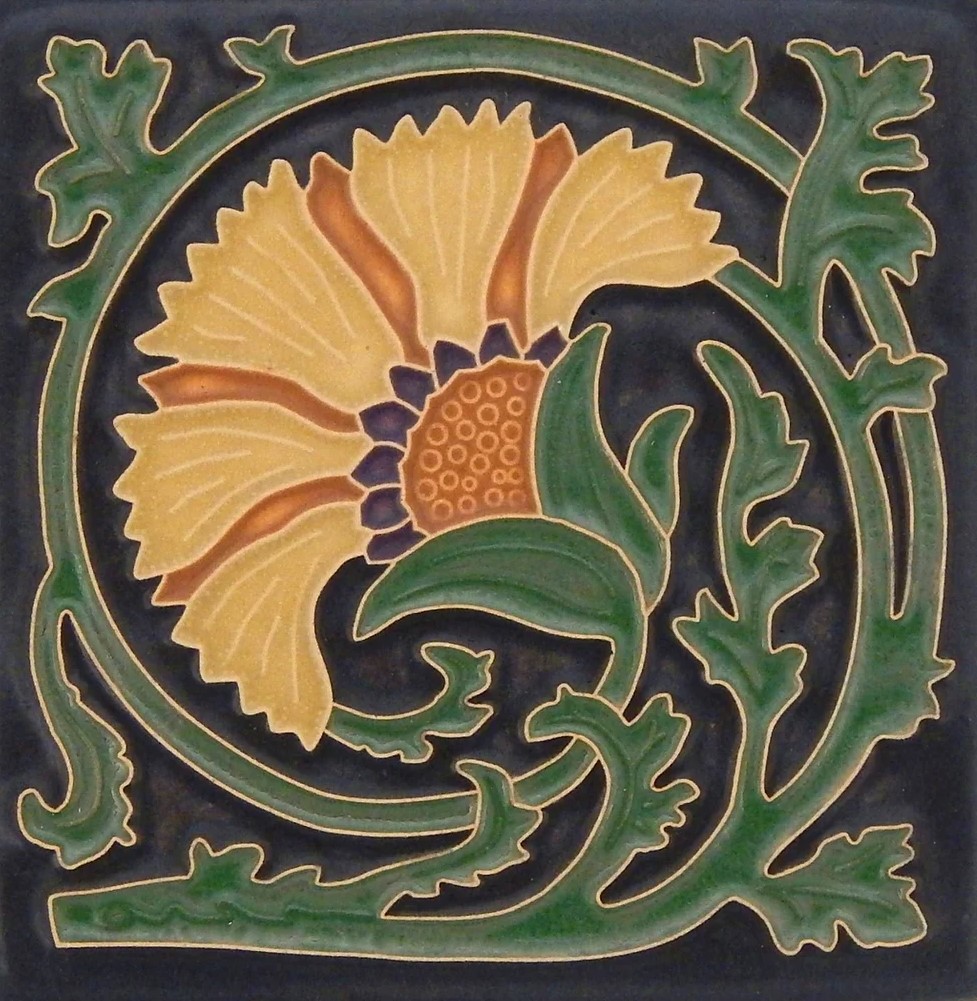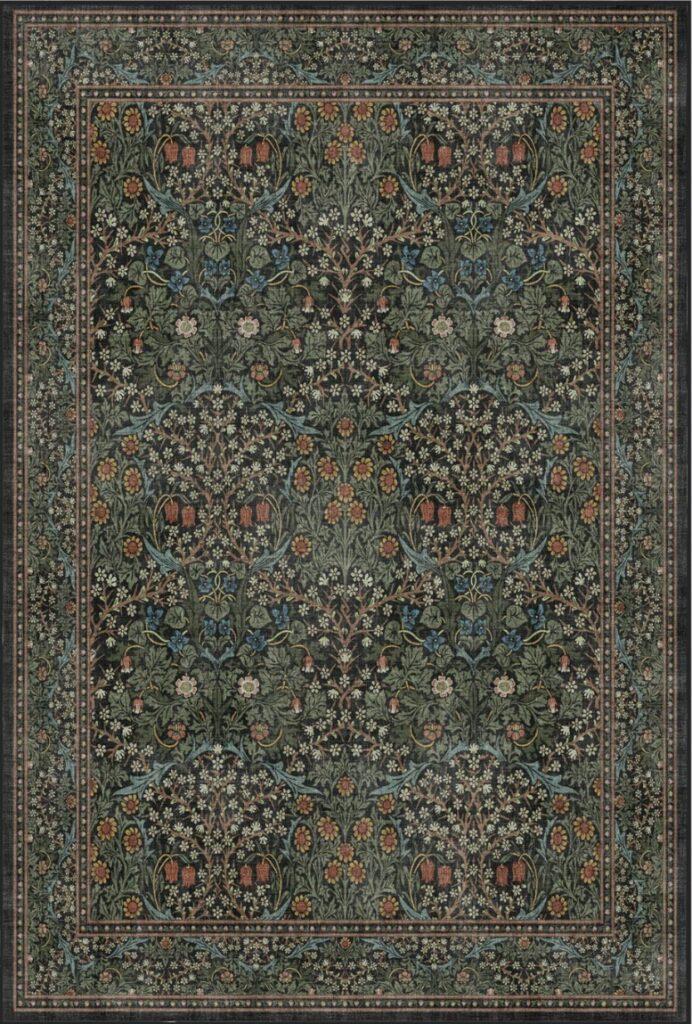The Craftsman Style was pioneered by the Arts and Crafts movement and led by influential figures like William Morris and Gustav Stickley. This style celebrated simplicity, functionality, and skilled craftsmanship. The style gained popularity in the United States during the early 20th century, becoming synonymous with the American Arts and Crafts movement.
Craftsman houses were inspired by the work of two Californian brothers – Charles and Henry Greene, who practiced together in Pasadena from 1893-1914. They were inspired by the English Arts + Crafts Movement, Oriental wooden architecture and their own experience in construction. Many pattern books exist of plans for Bungalow Craftsman homes. One-story Craftsman houses are one of the most popular smaller houses in the country.
Characteristics
Low-Pitched Gable Roofs with Exposed Rafters
Craftsman homes typically feature low-pitched gable roofs with wide, overhanging eaves that often showcase exposed rafter tails. Details like this highlight the structural integrity and craftsmanship of the design.
Wide Front Porches with Distinctive Columns
Columns with tapered bases (or piers) that continue to the ground often support front porches in Craftsman homes. Typically, square upper columns rest on massive piers or a solid balustrade. Materials used for the piers vary. Some are stone, clapboard, shingles, brick, concrete block or stucco and they sometimes appear in combination.
Handcrafted Details
Intricate handcrafted details are another hallmark of Craftman Style homes. From exposed beams to built-in furniture and hand-carved woodwork, these homes celebrate the artistry of craftsmanship. Built-in interior features often include bookcases, benches, and handcrafted fireplace surrounds.
Earthy Color Palettes
Similar to Prairie Style Homes, Craftsman interiors also feature earthy color palettes. Warm hues like olive greens, deep browns, and muted tones create the warmth and charm that are so characteristic of this style.
Decorative Motifs
Textiles and wallcovering often featured geometric patterns or nature-inspired motifs. Craftsman artists aimed to be inspired by nature rather than replicate nature precisely. Motifs were often simplified and stylized, allowing some artistic license and “interpretation”, which I think is a big part of the charm and delight of Craftsman style features. Common Arts and Crafts-style accessories like pottery and decorative tiles often featured nature-inspired motifs. Light fixtures often featured stained glass shades and were made with wrought iron details.
Some examples of Craftsman Tile Designs featuring nature-inspired motifs
I noticed recently that Ruggable has some new William Morris patterns available through their website. This design is one of my favorites in that collection!
Enduring Style
Craftsman style homes continue to capture the hearts of homeowners for many reasons. The simplicity and elegance of Craftsman homes have a timeless quality that transcends trends. Craftsmanship and a commitment to quality construction methods and detailing have allowed these homes to stand the test of time and be highly valued over the years. Additionally, the emphasis on wide porches and a connection to nature make this style universally appealing, since we all crave more nature in our lives!
Looking to Begin your Design Journey?
Maybe you’d like to honor the history of your craftsman home or you want to create a modern interpretation of your own. If that’s you, I’d love to talk!
Contact me to get the conversation started!


